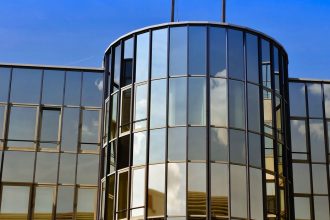As urban populations continue to grow, cities around the world are facing unprecedented challenges such as climate change, resource depletion, and social inequality. The traditional model of urban development is being re-evaluated, leading to the rise of smart sustainable cities. These cities prioritize environmental stewardship, economic viability, and social equity, integrating innovative practices in green building design and sustainable real estate development. This post explores how smart sustainable cities are transforming urban living and highlights initiatives such as the Living Building Challenge that inspire these advancements.
The Concept of Smart Sustainable Cities
Smart sustainable cities utilize advanced technologies and data analytics to enhance the quality of life for residents while minimizing environmental impact. They are characterized by:
- Integrated Urban Planning: Leveraging data to create efficient land use plans that prioritize green spaces, mixed-use developments, and public transport.
- Resilient Infrastructure: Developing buildings and infrastructure that can withstand climate impacts and promote sustainable practices, such as renewable energy use and waste reduction.
- Citizen Engagement: Involving residents in decision-making processes to ensure their needs and voices shape the urban landscape.
- Social Equity: Ensuring that all demographic groups have access to resources, services, and opportunities, contributing to a more inclusive society.
Innovative Practices in Green Building Design
Sustainable real estate development is a cornerstone of smart cities, focusing on environmentally friendly practices and materials. Innovative building designs are key to achieving sustainability goals, and several practices are at the forefront:
1. Passive Design Strategies
Passive design focuses on optimizing a building’s orientation, natural ventilation, daylighting, and thermal mass to minimize energy use. This can include:
- Orientation: Positioning buildings to take advantage of sunlight and prevailing winds.
- Insulation: Using advanced insulation materials to retain heat in winter and keep it cool in summer.
- Window Placement: Strategically placing windows to minimize energy consumption while maximizing natural light.
2. Renewable Energy Integration
Many sustainable buildings incorporate on-site renewable energy systems, including solar panels, wind turbines, and geothermal heat pumps. For example:
- Solar Energy: Rooftop photovoltaics not only reduce reliance on grid electricity but can also provide surplus energy.
- Energy Storage: Battery systems allow surplus energy to be stored for use during high demand, enhancing grid resilience.
3. Water Conservation Techniques
Efficient water management is crucial in sustainable building design. Techniques include:
- Rainwater Harvesting: Collecting and storing rainwater for irrigation and non-potable uses.
- Greywater Recycling: Reusing water from sinks and showers for toilet flushing and landscape irrigation.
4. Sustainable Materials and Construction Practices
Using eco-friendly materials and methods helps reduce the carbon footprint of buildings significantly. Key practices include:
- Locally Sourced Materials: Minimizing transportation emissions and supporting local economies.
- Reclaimed and Recycled Materials: Reducing waste and the demand for new resources.
The Living Building Challenge: An Inspiring Framework
One of the most ambitious frameworks for developing sustainable buildings is the Living Building Challenge (LBC). Initiated by the International Living Future Institute (ILFI), this program sets a vision for buildings that operate as cleanly, beautifully, and efficiently as nature’s architecture. The challenge is divided into seven performance areas known as "Petals": Place, Water, Energy, Health & Happiness, Materials, Equity, and Beauty.
Key Goals of LBC:
- Net-Zero Energy: Buildings must produce as much energy as they consume over a year.
- Net-Zero Water: Buildings must manage all water on-site and not rely on external sources.
- Use of Non-Toxic Materials: Promoting healthy environments by eliminating harmful substances.
Real-World Examples:
- The Bullitt Center in Seattle, Washington, often referred to as the "greenest commercial building in the world," meets LBC standards with its energy-positive features and focus on sustainability.
- The Omega Center for Sustainable Living in Rhinebeck, New York, is also LBC-certified, utilizing rainwater, geothermal heating, and a natural wastewater treatment system.
The Road Ahead: Challenges and Opportunities
While the shift toward smart sustainable cities presents enormous potential, hurdles remain. Urban planners and developers must navigate:
- Initial Costs: The upfront investment for sustainable technologies can be high, but long-term savings and environmental impact often outweigh these expenses.
- Policy and Regulation: Governments need to develop supportive policies and incentives to encourage sustainable practices.
- Public Awareness and Acceptance: Community buy-in is crucial for the success of sustainable initiatives, necessitating education and engagement efforts.
Conclusion
Smart sustainable cities represent the future of urban living, redefining how we construct, inhabit, and relate to our urban environments. By embracing innovative practices in green building design and frameworks like the Living Building Challenge, cities can become ecosystems that thrive economically, socially, and environmentally. The journey towards creating cities that are not just places to live, but vibrant, sustainable communities requires commitment from stakeholders across all sectors—government, private enterprise, and citizens alike. By working together, we can build a future that is not only green but equitable, resilient, and truly sustainable.







